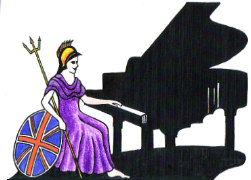Teachers, Accompanists and Piano Entertainers in the UK

UK Piano Page

45 Rosemount Viaduct
Rosemount
Aberdeen, Aberdeenshire AB251NQ
Scotland
Kemble Centre of Excellence other leading brands
98 Canongate
The Royal Mile
City of Edinburgh, Edinburgh EH8 8DD
Scotland
For over 40 years we have been known as Edinburgh
273 Sauchiehall Street
Glasgow, Lanarkshire G2 3HQ
Scotland
Biggars Music, established in 1867, is Glasgow's
The Temple, Eastgate
Sleaford, Lincolnshire NG34 7DR
England
White & Sentance are one of the longest
11, St. Mary's Hill
Stamford, Lincolnshire PE9 2DP
England
Music shop established in 1963 we stock a large
Music Festival for performers and guests Our 10th
18-06-2022 12:30PM
The Morecambe Bay Piano Group was set up to extend
11-12-2021 01:00PM
The Morecambe Bay Piano Group was set up to extend
08-01-2022 01:00PM
The Morecambe Bay Piano Group was set up to extend
12-02-2022 01:00PM